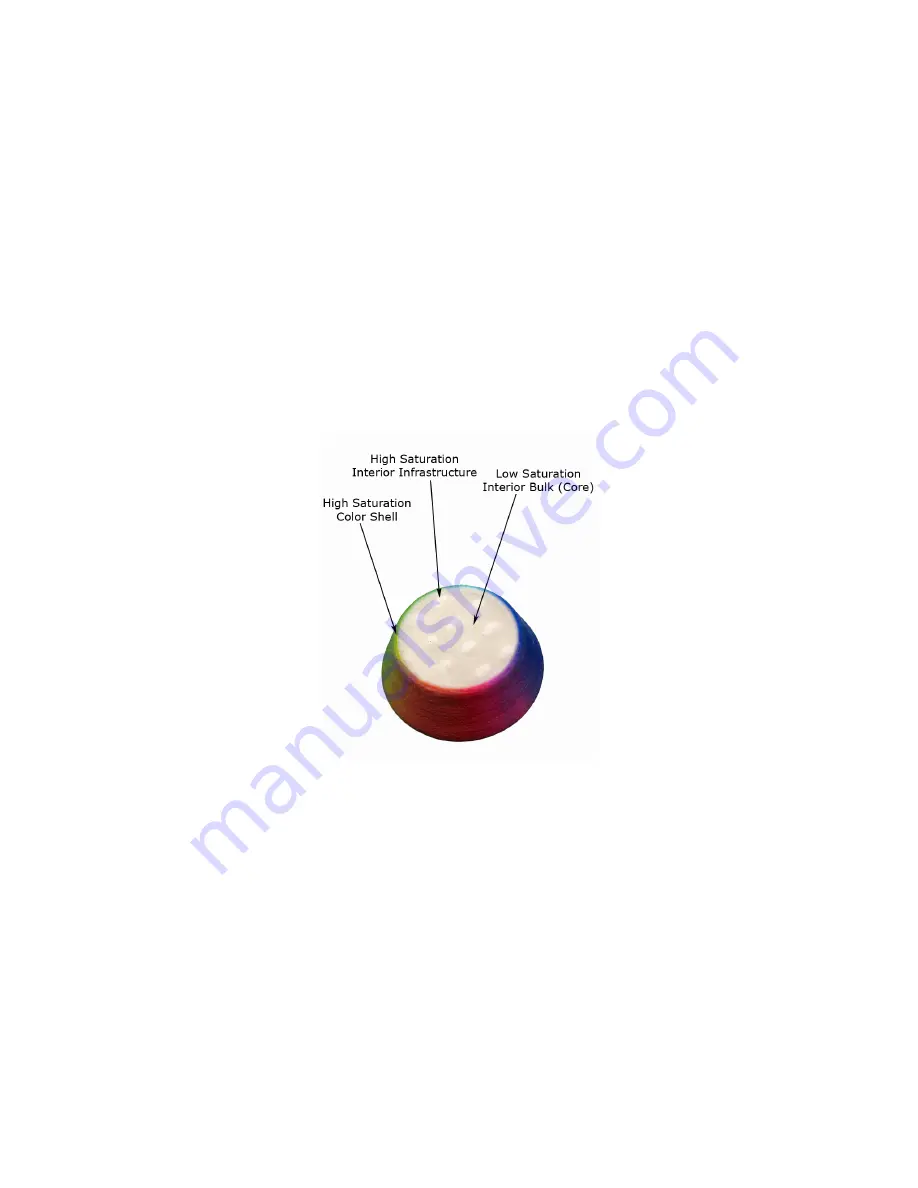
ZPrinter
®
650 Hardware Manual
ZPrinter 650 Overview
zcentral.zcorp.com
3
All Rights Reserved
10/21/08
•
A 3D Printer
•
Importing a solid 3D modeling file into the ZPrint Software
•
Setting up your files to print in the ZPrint/ZEdit Software
•
Printing, powder removal, and drying the part
•
(Optional) Applying post-processing materials to the printed part
To start, the ZPrint Software takes a three-dimensional design file, (ZPrint is compatible with most 3D mod-
eling software files) and converts it into cross-sections, or layers, that are between 0.0035" - 0.004" (0.089
- 0.102 mm) thick. Before printing, ZPrint evaluates the part geometry and checks if there are enough
materials in the printer to print the number of layers required to build the part. If there are, the printer then
prints each layer, one after the other, from the bottom of the part to the top. If not, ZPrint will prompt you to
add powder, to add binder, or to change a print head before it will start the print job.
During printing, binder is first applied with a higher saturation to the edges of the part, creating a strong
“shell” for the part exterior. Next, an infrastructure that works like strong scaffolding is created for the part
walls, which are also built with a higher saturation of binder for added strength. The remaining interior
areas are printed with a lower binder saturation, which gives the part its stability.
When the part is finished printing, the printer heats up to the appropriate temperature and dries the part
while it is still in the Build Bed surrounded by powder. When the drying cycle is finished, an automatic pow-
der removal cycle empties the Build Bed of most of the excess powder around the part, and returns that
powder to the Feeder for reuse. After the bulk of the powder removed, the part is moved from the Build
Bed to the integrated Post-Processing Unit where any remaining powder is cleaned off the part.
After the part is powder-free, it is ready to be removed from the printer. You can evaluate the part as it is, or
you can choose to post-process the part with infiltration products to give it additional strength, durability,
and color vibrancy. With the finished part in your hands, you can start improving or modifying your design
within the same day, and usually within hours.
























